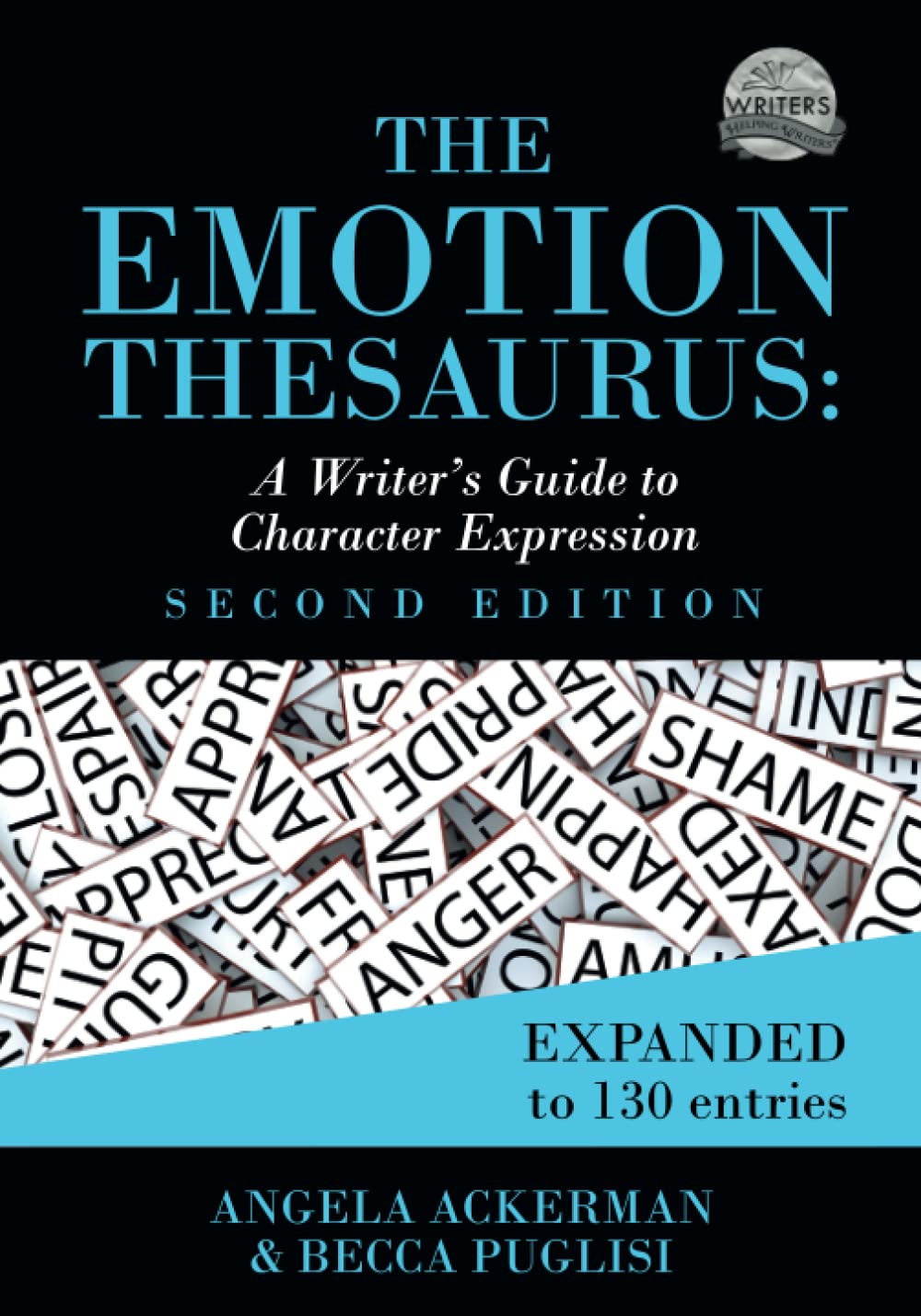About this deal
Crafting emotion in writing is an essential skill that every writer should master to create compelling characters and stories. The Emotion Thesaurus is a valuable tool that can help you add depth and authenticity to your characters’ emotions. In this section, we will explore how to use body language cues, vocal cues, and nonverbal cues to craft emotion in your writing. Body Language Cues Each entry is followed by its definition, the physical signs and behaviours, the internal sensations, mental responses, acute or long-term responses for the emotion, signs the emotion is being suppressed, what the emotion may escalate to, what the emotion may de-escalate to, a list of associated power verbs, and-my personal favourite- a fantastic writer's tip.
The Emotion Thesaurus covers a wide range of emotions, including happiness, sadness, anger, fear, and surprise. It also includes more complex emotions such as envy, guilt, and shame. Each emotion is accompanied by a list of physical and mental responses that can help writers to show how their characters are feeling. What are some synonyms for emotions that can be found in the Emotion Thesaurus? The Emotion Thesaurus is a valuable tool for writers who want to create characters that feel authentic and relatable. To use the second edition effectively, start by identifying the emotion you want to convey in your scene. Then, look up that emotion in the Emotion Thesaurus to find a list of physical, internal, and mental responses that your character might experience. Using this resource will allow your students to expand their feelings vocabulary at KS2. Providing children with the words they need to accurately vocalise how they are feeling is an extremely powerful and important thing. The first step in overcoming negative emotions is identifying what they are and what they are tied to. This Emotion Thesaurus Vocabulary Grid Poster will help your students to reach that first step. There is also a lot of positive vocabulary included in this resource, to help children vocalise when they are feeling good. The Emotional Thesaurus is a fantastic writer's handbook, and must have as a reference while writing to help bring clarity yet interest to one's writing. For example, if you want to convey the emotion of “fear,” you might look up that entry in the Emotion Thesaurus and find a list of physical responses like “clammy skin,”“trembling,” and “wide eyes.” You might also find internal responses like “heart racing” and “shortness of breath,” as well as mental responses like “fear of the unknown” and “fear of failure.”
Scrabble Tools
This Emotion Thesaurus Vocabulary Grid Poster is a super versatile resource that can be used in a number of different ways to support your class. Use body language cues: Nonverbal cues can be just as important as dialogue when it comes to conveying emotion. The Emotion Thesaurus provides a list of body language cues for each emotion, such as “clenched fists” for agitation or “hugging oneself” for comfort. Emotive language is used more widely to convey an emotion to the audience. An example might be Martin Luther King Jr’s impassioned ‘I have a dream’ speech, or Neil Armstrong’s simple yet effective ‘That’s one small step for man, one giant leap for mankind’. Both of these messages, however simple, included language that was specifically chosen to evoke an emotional reaction from the listener. It provides over 130 emotions and their accompanying body language, thoughts, and sensations to help writers more accurately and vividly describe their character’s emotions
Was that an overly exited way of greeting? Did I, by any chance, freak you out with my excessively jovial nature? I apologize.) I must admit I am guilty of not taking the time or attention to identify smells, I have been trying to remember to do it in different situations, but those who are a lot like me that do not smell as well as others do. Make a list of your body language crutches (frowning, smiling, shrugging, head shaking, etc.). Use your word processor’s search and replace feature to highlight these so you can pinpoint where the emotional description needs some freshening up.” p. 47
Find a Scheme of Work
Want more great resources like this? Create your own FREE Twinkl account today! Are you looking for more feelings vocabulary KS2 resources?
The feelings vocabulary for KS2 included in this poster is split up into eight sections: excited, angry, sad, disgusted, scared, surprised, relaxed and happy. Due to its vibrant and colourful design, this poster is perfect for decorating your classroom or adding to a lovely feelings-related display.Beyond all this, you also see sub-lists of “Mental Responses,” “Cues of Long-Term Hurt,” “Cues of Suppressed Hurt” and an additional writer's tip for each emotion chapter. These authors thought of everything you can do, think, feel, react and stubbornly hang-on to for every major emotion we humans experience.
Related:
 Great Deal
Great Deal 